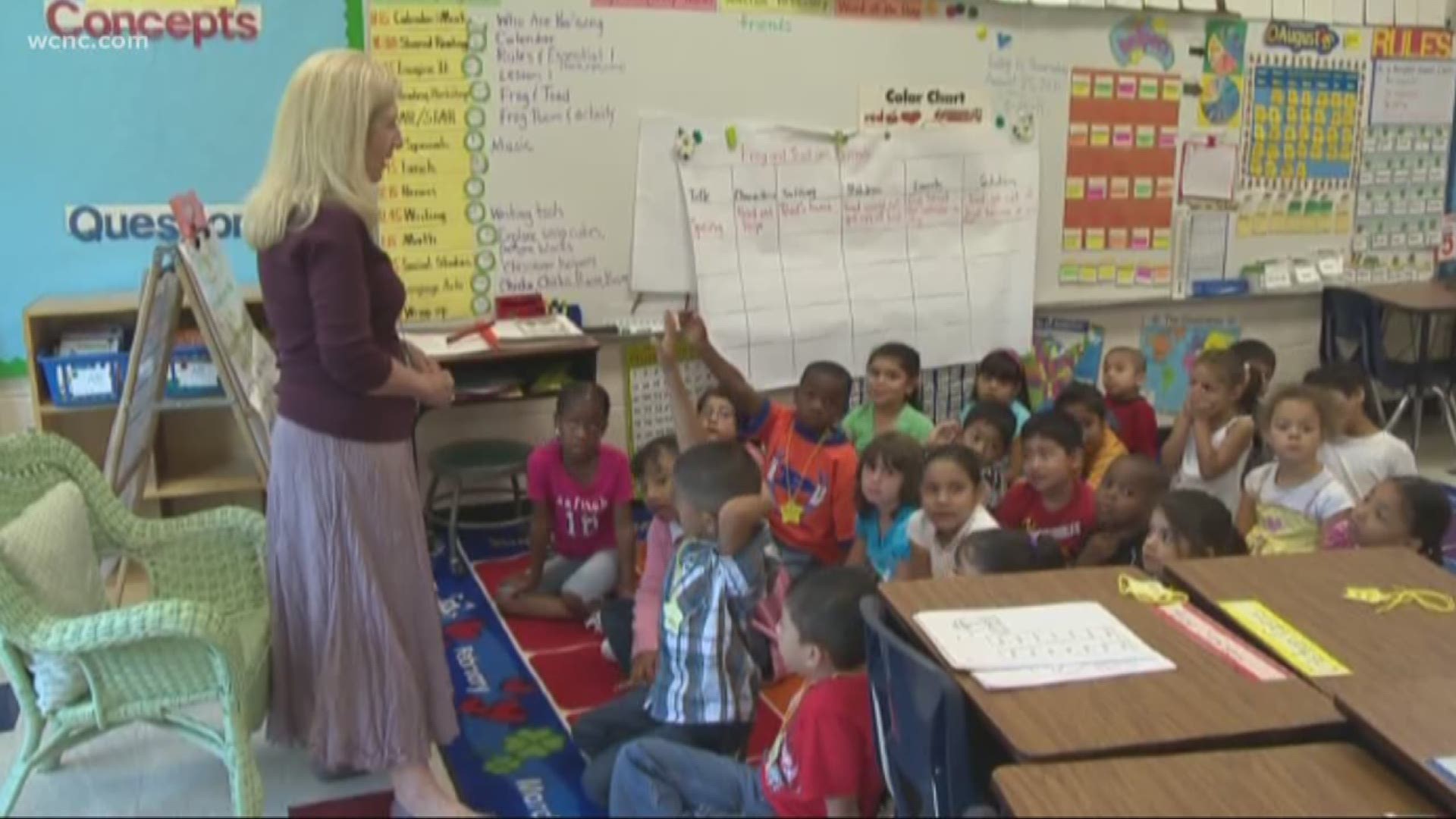CHARLOTTE, N.C. — New data from North Carolina shows Charlotte-Mecklenburg Schools is lagging behind other districts when it comes to student-teacher ratios and in an effort to address the issue, may overload classrooms in older grade levels.
CMS' median ratio of one teacher for every 20 students is the worst in the region, tied with Cabarrus County, according to an NBC Charlotte review of state numbers. The state median is 1:18, according to North Carolina Department of Public Instruction records.
The numbers show CMS is struggling the most in elementary schools, with some math and science classes home to anywhere from 26 to 34 students for just one teacher. That's well above what's expected, and it's especially concerning since the district has one year to improve its kindergarten through third grade ratios in order to comply with a new state law.
"It's frustrating for us, because we take educating these kids very seriously," said CMS Government Relations Coordinator Charles Jeter. "We understand the goal, we want to accomplish it too, all we're asking is give us the resources to actually be successful and we don't feel like we're getting that."
As it stands, the median ratios for kindergarten and first grade are 1:19, while second and third grade are at 1:20. Jeter said the law requires ratios of 1:18 for kindergarten, 1:16 for first grade and 1:17 for second and third grades.
CMS' lobbyist said it would likely cost the district $175 million to build the necessary 200+ classrooms needed. Not only does the district not have the money, Jeter said it doesn't have the time to get it done by the deadline. If the state doesn't give CMS a delay and doesn't give the district funding, he said the only way the school system can comply is to overload even more classrooms in older grade levels.
"We see the wave coming toward the shore, we're trying to cry for help, we've asked the General Assembly for a delay until at least the capital can come in and no one's listening," Jeter said. "We struggle with this, because we want the best for every kid. I don't believe having fourth and fifth grade classrooms with an average class size of 30, 35 kids, which is going to be the outcome, is beneficial to our students."
CMS' new superintendent Earnest Winston said the district is committed to overcoming the challenge.
"We're having those conversations about how do we move resources around? How do we advocate for additional dollars?" Winston said. "We want to make sure that our students are in an environment where they can do their best work. That's what's important to us. We will have to make some very hard decisions. I want to let our families know that's top of mind. We're never losing sight of those discussions."
As NBC Charlotte reported last year, four out of every 10 CMS classrooms are already considered overcrowded. Research shows the smaller the class size, the more kids learn. CMS argues even if the district improves the numbers, 1 teacher per 15 students is well beyond reach. One study found learning increases progressively when the numbers get that low.
"They need to be about 11, 12, 13 kids per class," Jeter said. "We're not getting anywhere close to where that statistical data says we have to get to."
A spokesperson for Cabarrus County Schools said the district has some concerns about the accuracy of the state's data.
"That said, it is important for you to know that Cabarrus County Schools values keeping class sizes low, while at the same time being an excellent steward of taxpayer dollars," Ronnye Boone said. "The median class size for CCS is 20. This 2018-19 data set includes classes such as recess, virtual courses, guidance, the arts and more, which are not included in the data used to calculate the average class size by the State of North Carolina."
State data reveal these median student-teacher ratios for other districts:
Union County: 1 for 19
Catawba County: 1 for 19
Iredell-Statesville: 1 for 19
Gaston County: 1 for 19
Rowan-Salisbury: 1 for 18
Stanly County: 1 for 16
Lincoln County: 1 for 18
Cleveland County: 1 for 18
Wake County: 1 for 19
Alamance County: 1 for 19
Alexander County: 1 for 18
Alleghany County: 1 for 16
Anson County: 1 for 16
Yancy County: 1 for 16
Yadkin County: 1 for 18

